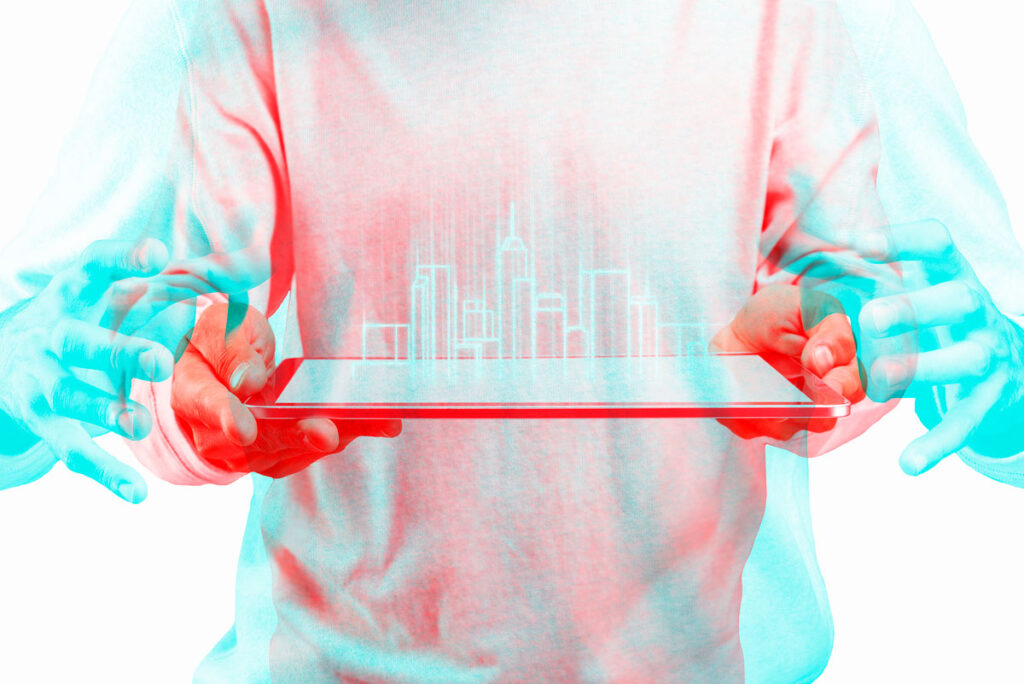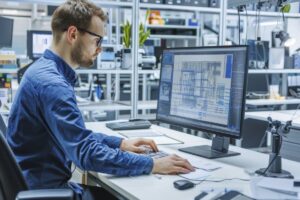Exclusive Neuroject Article: The concept of digital twin technology was initially introduced in 1991 with David Gelernter’s publication, “Mirror Worlds.” However, Dr. Michael Grieves is credited with applying the concept to manufacturing in 2002, introducing the digital twin software concept. NASA’s John Vickers coined the term “digital twin” in 2010. Although these formal definitions are recent, the fundamental idea of using them to study physical objects dates back much earlier. NASA, during its space exploration missions in the 1960s, pioneered the use of its technology, precisely replicating each spacecraft on Earth for study and simulation purposes.
The inception of a digital twin involves the expertise of applied mathematics or data science professionals who delve into the physics and operational data of a physical object or system. Their goal is to construct a mathematical model that emulates the original.
Developers behind it ensure that the virtual computer model can seamlessly interact with sensors collecting data from the real-world counterpart. This capability enables the digital version to mimic and simulate real-time occurrences of the original, facilitating the extraction of insights into performance and potential issues.
The complexity of a digital twin can be tailored to specific needs, with the quantity of data determining the level of fidelity to the real-world physical counterpart. It can be employed alongside a prototype to provide feedback during product development or act as a standalone prototype to predict the outcomes of a physical version when constructed.
Table of Contents
What Exactly is a Digital Twin?
A digital twin is essentially a virtual representation of a physical entity, be it an object, a person, or a process, set within a digital version of its specific environment. The primary purpose of it is to enable organizations to simulate real-life scenarios, assess potential outcomes, and, as a result, make more informed decisions.
Imagine having a digital replica of yourself – a precise, digital doppelgänger – within an accurate digital rendition of your surroundings, whether it’s your home, workplace, neighborhood, or even an entire city. What’s more, this digital version of you is immune to injury, impervious to pain, and free from embarrassment. The possibilities appear limitless. In essence, having a digital twin would empower you to make decisions with a heightened level of certainty about their consequences.
In the business realm, this heightened certainty is immensely valuable, and emerging its technologies hold the potential to deliver it. To put it simply, it is a virtual clone of a physical entity, be it an object, a person, or a process. It is utilized to simulate the real-world behavior of the entity in question, allowing for a better understanding of its functionality and operation in real-life situations. They are intricately linked to real-time data sources from their physical counterparts, meaning that they continuously update to mirror their real-world counterparts. They also encompass behavioral insights and data-derived visualizations.
When multiple digital twins are interconnected within a single system, they create what is referred to as an enterprise metaverse – a digital and often immersive environment that replicates and links every facet of an organization. This enables the optimization of simulations, scenario planning, and decision-making processes.
There are various types of digital twins, including product twins, which replicate products at various stages of their lifecycle and offer real-time data on their performance. For instance, Google Maps serves as a digital twin of the Earth’s surface, providing real-time traffic data for optimized commutes.
Other types of it include production plant twins, which represent entire manufacturing facilities, and procurement and supply chain twins, also known as network twins. Lastly, infrastructure twins replicate physical structures such as highways, buildings, and stadiums.
They have the potential to enhance the agility and resilience of operations, and CEOs are taking notice. McKinsey research suggests that 70 percent of C-suite technology executives in large enterprises are already exploring and investing in digital twins.
So, what value can they bring to an organization? One of the most significant areas where digital twins excel is in reducing time to market. They facilitate rapid iterations and design optimizations, resulting in faster product development compared to physical prototyping. Moreover, They contribute to substantial improvements in product quality by identifying design flaws early in the process. Finally, by creating a digital twin for a product in service, organizations can establish a single source of truth for real-time performance evaluation and adjustment.
They can also have a positive impact on an organization’s environmental sustainability efforts. They assist in reducing material consumption in product design and improving product traceability, which, in turn, reduces environmental waste. Notably, consumer electronics manufacturers have successfully reduced scrap waste by approximately 20 percent through the use of it, demonstrating their potential for enhancing sustainability.
In summary, digital twins represent a powerful technology that offers organizations the ability to simulate, analyze, and improve various aspects of their operations, from product design to sustainability, ultimately leading to more informed decision-making and significant competitive advantages.
Suggested article for reading: Digital twin technology in construction & Building

How does It Function?
A digital twin is a virtual model designed to accurately replicate a physical object. For instance, consider a wind turbine that is equipped with various sensors monitoring crucial aspects of its performance, such as energy output, temperature, and weather conditions. These sensors collect data about the physical object’s operation, which is then transmitted to a processing system and integrated into the digital replica.
Once armed with this data, the virtual model becomes a tool for running simulations, examining performance issues, and generating potential enhancements. The ultimate goal is to derive valuable insights that can be applied to improve the original physical object.
Digital twins vs. simulations: While both simulations and digital twins employ digital models to replicate a system’s processes, digital twins create a more immersive and comprehensive virtual environment. The primary distinction between them lies in their scope: Simulations typically focus on a specific process, whereas digital twins have the capacity to perform multiple simulations to examine various processes.
These disparities extend beyond scope. Simulations typically lack the benefit of real-time data, whereas they are specifically designed to facilitate a two-way exchange of information. First, sensors on the physical object provide pertinent data to the system’s processor, and then the insights generated by the processor are shared back with the original object.
With access to better and continuously updated data across various domains, coupled with the enhanced computing power offered by a virtual environment, they can examine a broader spectrum of issues from multiple perspectives, surpassing the capabilities of standard simulations.
Suggested article for reading: Virtual Reality in Construction
The Technology Behind It
A variety of cutting-edge technologies work together to power digital twins. Together, these technologies produce a virtual image of a system or physical item, allowing for real-time study, modeling, and monitoring. An outline of the main technologies underlying them is provided below:
- IoT Sensors: In order to get data in real-time from the physical asset or system being connected, Internet of Things (IoT) sensors are necessary. Numerous characteristics, including vibration, pressure, temperature, and more, are measured by these sensors. Their generation of data is essential to maintaining the digital replica current.
- Data Connectivity : Data connectivity infrastructure needs to be strong and dependable in order to transfer data from IoT sensors to the Digital Twin. Wireless communication protocols, such as Wi-Fi, Bluetooth, or even 5G for fast, low-latency communications, are frequently used in this.
- Cloud Computing: The enormous volume of data produced by sensors is processed and stored by digital twins using cloud computing. Because cloud platforms are accessible and scalable, users can use the Digital Twin from any location with an internet connection.
- Big Data Analytics: Sensor data is frequently large and intricate. To make sense of this data, big data analytics methods like artificial intelligence and machine learning are used. In order to improve decision-making, these technologies can detect patterns, anomalies, and trends in real-time data.
- 3D Modeling and Visualization: An electronic replica of the real object or system is made using 3D modeling and visualization tools. This entails building an accurate, comprehensive 3D model that imitates the behavior and structure of the thing.
- Simulation Software: Simulation software is necessary in order to test different situations and evaluate the behavior of the Digital Twin. With the help of this program, users can run simulations to forecast how adjustments or outside influences will impact the physical asset. It is essential for maximizing efficiency and spotting possible problems.
- Edge Computing: Edge computing is used in various situations, especially when low-latency processing is necessary. This shortens the time needed for data analysis and response by processing data closer to the data source.
- Cybersecurity: Since they depend on a network of linked devices and cloud services, strong cybersecurity protocols are necessary to safeguard data integrity and privacy. To protect its ecosystem, this includes security mechanisms, authentication, and encryption.
- Digital Thread: A digital thread serves as a link between the design, manufacture, operation, and maintenance phases of a product’s lifecycle. This guarantees the accuracy and utility of it throughout the duration of its existence.
- Augmented Reality (AR) and Virtual Reality (VR): Digital data from the Digital Twin can be superimposed digitally on the actual asset or system using AR and VR technology. This improves training and design procedures as well as in-the-moment monitoring and maintenance operations.
- Blockchain: Blockchain technology is sometimes used to improve data traceability and security. It can guarantee that data stays transparent and impervious to manipulation, which is essential for applications such as supply chain management.
- Distributed Ledger Technology (DLT): DLT can offer a safe, decentralized method of overseeing the information and transactions inside a Digital Twin environment, just like blockchain technology does.
Together, these technologies produce a Digital Twin that is sensitive and dynamic. They are predicted to become indispensable tools in a variety of industries as technology develops and their capabilities and uses grow.
Suggested articles for reading: Big Data in Construction | Augmented Reality in Construction
Types of Digital Twins
Digital twins come in various types, each corresponding to the level of detail or magnification applied to a product. The primary differentiator among these types is their area of application. It’s common for different types of them to coexist within a system or process. Let’s explore these types to understand their differences and applications.
- Component Twins/Parts Twins: Component twins are the foundational units of digital twins, representing the smallest functioning components. Parts twins are similar but focus on components of slightly less significance.
- Asset Twins: When multiple components work together, they constitute an asset. Asset twins enable the study of interactions between components, resulting in a wealth of performance data that can be processed into actionable insights.
- System or Unit Twins: The next level of magnification involves system or unit twins, offering visibility into how various assets combine to form an entire functional system. System twins shed light on the interactions of assets and may suggest performance enhancements.
- Process Twins: At the macro level of magnification, process twins reveal how systems collaborate to create an entire production facility. These twins help determine the precise timing schemes that influence overall effectiveness by examining the synchronization of various systems.

How Can an Organization Initiate the Development of Its First Digital Twin?
A fundamental requirement for implementing digital twins is digital maturity, primarily reliant on data quality and infrastructure. A robust data infrastructure should deliver dependable data from both testing and real-life settings, complemented by the necessary expertise for maintaining this infrastructure.
It’s important to note that an organization doesn’t necessarily need a complex or dynamic environment to start benefiting from it. Some companies are experiencing success by creating products as straightforward as toothbrushes, primarily to obtain real-time customer feedback. Once the initial use case is established, organizations can progressively incorporate additional layers of information and real-time feedback to enhance the digital twin’s capabilities.
Building and expanding it involves a three-step process:
- Create a Blueprint: Begin by developing a blueprint that outlines the types of twins to pursue, the optimal order for constructing them to maximize value and reusability, how their capabilities will evolve, and the ownership and governance structures.
- Build the Base Digital Twin: Assemble a project team to construct it over the next three to six months. This phase commences with the establishment of the core data product, enabling the creation of visualizations and the development of one or two initial use cases.
- Enhance Capabilities: Once it is operational, the organization can enhance its capabilities by introducing additional data layers and analytics to support new use cases. Organizations often progress from merely representing assets, individuals, or processes to providing simulations and prescriptions through the utilization of advanced modeling techniques and artificial intelligence.
What is the Transition from a Digital Twin to an Enterprise Metaverse Like?
Companies can embark on their journey to an enterprise metaverse by creating it based on a data product. A data product serves as a high-quality, readily accessible dataset that individuals across the organization can easily utilize. It functions as a single, reusable source of truth that evolves over time and forms the foundation for future use cases. It evolves as it absorbs insights from behavioral data, ultimately providing more potent predictive capabilities.
From this point, an organization can develop multiple interconnected digital twins to simulate complex relationships between various entities. This approach generates deeper insights into behaviors, facilitating even more advanced use cases and delivering greater value. For example, an organization might connect its customers with retail stores, inventory, sales, and customer process flows. This interconnected approach enables the organization to:
- Simulate the end-to-end impact of business and market changes on retail stores.
- Create a seamless omnichannel experience for customers.
- Optimize store layouts in response to shifts in customer preferences.
- Evaluate different compensation and staffing models based on sales, employee performance, and local store characteristics.
Ultimately, an organization with a well-established network of digital twins can introduce additional technologies to create a comprehensive enterprise metaverse. For instance, a retailer could connect its retail store to the digital twins of its warehouses, supply chain, call center, and other components until every aspect of the organization has been replicated.
Suggested articles for reading: Construction in the Metaverse | Architecture in the Metaverse
How are Some Companies Already Leveraging Digital Twins?
Interest in digital twins, coupled with the rapid advancement of supporting technologies, is driving predictions of its investments exceeding $48 billion by 2026. Several innovative implementations are already in progress:
- Emirates Team New Zealand: It is of sailing environments, boats, and crew members allows the team to test boat designs without physical construction. This has enabled them to evaluate thousands of hydrofoil designs, significantly exceeding previous capabilities.
- Anheuser-Busch InBev: The brewing and supply chain digital twin enables brewers to adjust inputs based on real-time conditions and automatically compensate for production bottlenecks.
- SoFi Stadium: It aggregates data from multiple sources to optimize stadium management and operations, incorporating structural data and real-time football data.
- Space Force: This branch of the US Armed Forces is creating a digital twin of space, including replicas of extraterrestrial bodies and satellites.
- SpaceX: A digital twin of SpaceX’s Dragon capsule spacecraft allows operators to monitor and adjust trajectories, loads, and propulsion systems, enhancing safety and reliability during transport.
These real-world applications demonstrate the diverse possibilities and significant value they offer to various industries and sectors.
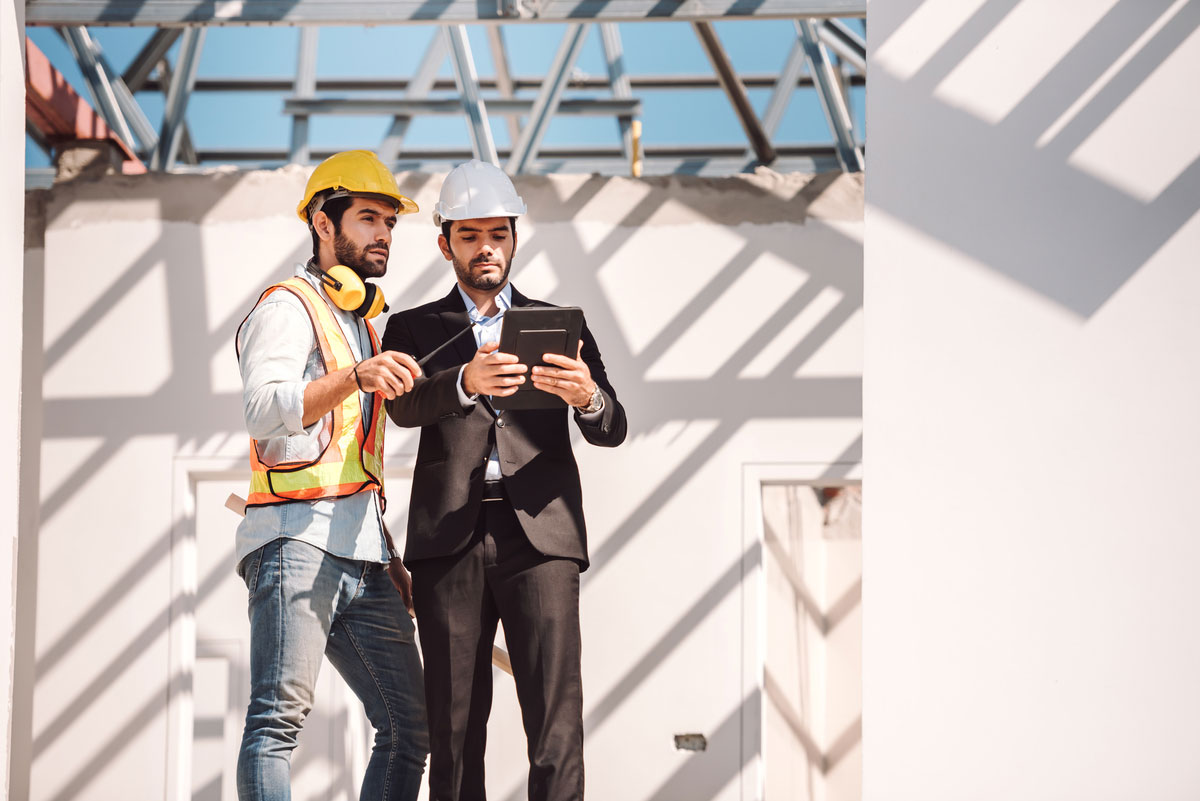
Advantages and Benefits of Digital Twins
The advantages of utilizing its technology vary depending on when and where it is employed. For instance, the use of digital twins to monitor existing products like wind turbines or oil pipelines can lead to reduced maintenance workloads and substantial cost savings. Employing them for prototyping before manufacturing can diminish product defects and accelerate time-to-market. In various scenarios, they aid in process enhancements, whether it involves tracking staffing levels in relation to output or aligning a supply chain with manufacturing or maintenance needs.
Common benefits of developing digital twins encompass enhanced reliability and availability through performance monitoring and simulation. They can minimize the risk of accidents and unscheduled downtime by predicting failures, thus lowering maintenance expenses and ensuring that production objectives are not disrupted by scheduled maintenance, repairs, or parts orders. Digital twins are also instrumental in facilitating ongoing improvements by examining customization models and guaranteeing product quality through real-time performance testing.
Nonetheless, it’s essential to acknowledge that, despite the numerous advantages, its technology is not universally applicable, as it can introduce complexity. Some business challenges can be resolved without the investment in time and cost. They offer several advantages, including:
- Enhanced R&D: It facilitates more effective research and product design by generating extensive data on anticipated performance outcomes, leading to insights that can guide product refinements before production.
- Improved Efficiency: It can monitor production systems to achieve and maintain peak efficiency throughout the entire manufacturing process, even after a product has entered production.
- Product End-of-Life: It helps manufacturers make informed decisions about products that have reached the end of their lifecycle, including recycling or other measures to harvest product materials.
Market and Industries
They are most beneficial for industries and projects involving large-scale products or processes, such as:
- Engineering (Systems)
- Automobile Manufacturing
- Aircraft Production
- Railcar Design
- Building Construction
- Manufacturing
- Power Utilities
Its market is rapidly expanding, reflecting the growing demand for this technology. In 2022, the global market was projected to reach USD 73.5 billion by 2027. This indicates that they are gaining traction across various industries and are expected to continue growing in significance.
Enhancing Manufacturing Efficiency
Leveraging end-to-end digital twins enables owners/operators to minimize equipment downtime while boosting production. Explore the Service Lifecycle Management solution developed collaboratively by IBM and Siemens.
Discover Siemens’ Implementation of Digital Twins Applications: It has already found widespread application in the following areas:
- Power-Generation Equipment
- Large engines, such as jet engines, locomotive engines, and power-generation turbines, derive significant benefits from the utilization of digital twins, particularly for scheduling essential maintenance tasks.
- Structures and Their Systems
- Considerable physical structures, such as large buildings or offshore drilling platforms, can benefit from it, particularly during the design phase. They also prove valuable in the design of systems operating within these structures, like HVAC systems.
- Manufacturing Operations
- Given that digital twins are designed to replicate a product’s entire lifecycle, it’s no surprise that they have become integral at every stage of manufacturing. They guide products from the design phase to the finished product and all intermediate steps.
- Healthcare Services
- Just as products can be profiled through the use of digital twins, patients receiving healthcare services can also be characterized. This same sensor-generated data system can track various health indicators and generate crucial insights.
- Automotive Industry
- Automobiles encompass a multitude of complex, interrelated systems, and digital twins are extensively used in auto design to enhance vehicle performance and streamline production efficiency.
- Urban Planning
- Civil engineers and professionals involved in urban planning greatly benefit from digital twins, which offer real-time 3D and 4D spatial data representation and the integration of augmented reality systems into built environments.
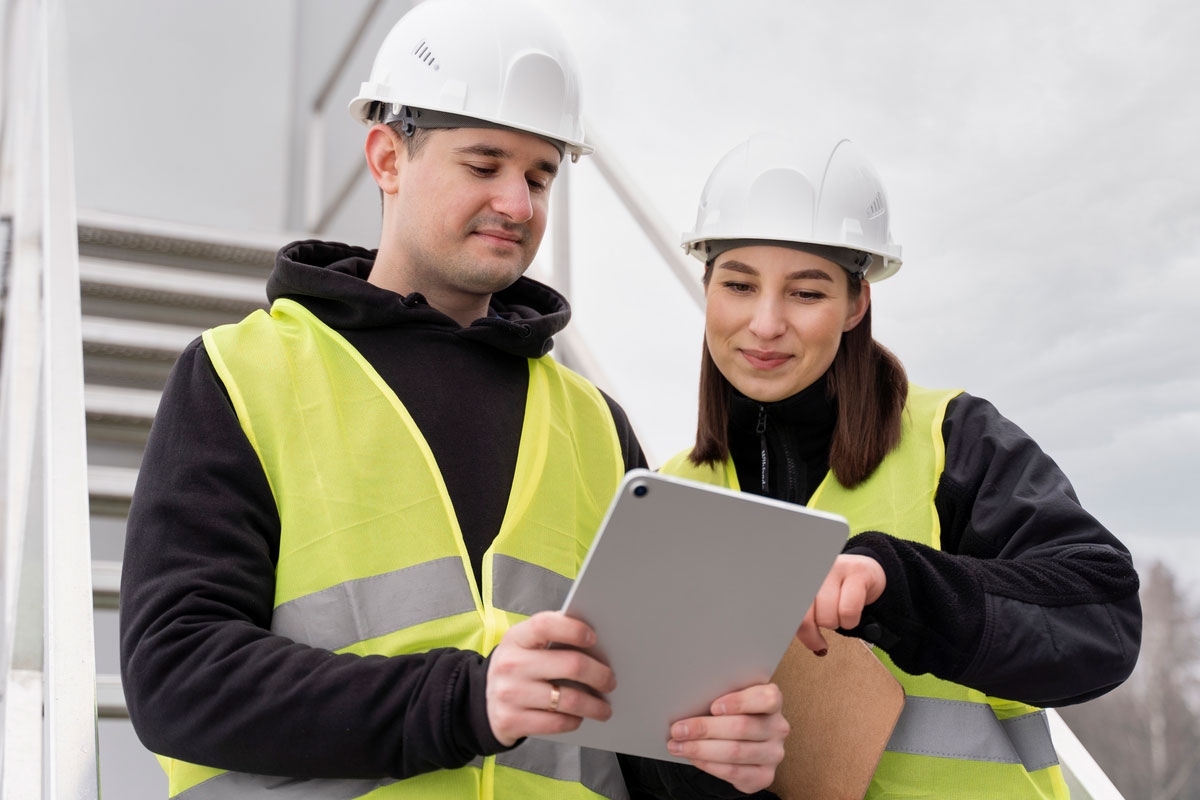
Challenges and Limitations
Its technology has been harnessed across diverse industries, such as automotive, healthcare, and power generation, to address a multitude of challenges. These include fatigue testing and corrosion resistance in offshore wind turbines, as well as enhancing the efficiency of racing cars. Other applications involve modeling hospitals to optimize workflows and staffing for procedural enhancements.
It empowers users to explore solutions for extending product lifecycles, streamlining manufacturing and processes, and testing product development and prototypes. In these scenarios, digital twins serve as virtual representations of problems, enabling the development and testing of solutions within the digital realm, avoiding real-world experimentation. There are some of the primary obstacles that currently hinder the widespread adoption of Digital Twins:
1. Data Challenges
- During the initial phases of the DUET project, a common challenge emerged across all pilot sites, including Athens, Pilsen, and Flanders: the scarcity of suitable data. While exploring potential applications with these pilot regions, the primary hurdle was not identifying use cases for it but rather locating the necessary data to transform the Digital Twin into a practical tool for all regions.
Data ownership varies; sometimes it’s held by private companies, occasionally by federal authorities, and frequently, there’s either a lack of real-time data or limited sensor data available and in some cases, no data at all.
It’s important to remember that many local governments worldwide are still in the early stages of their digital transformation journey. This, in particular, limits the availability of open, real-time, and high-quality data. While the open data movement has brought about positive changes, especially in cities’ attitudes toward data, many local or regional governments lack the capacity or have yet to embrace the role of data broker or integrator.
2. Lack of Data Standards
- Once suitable data is identified for integration into it, a new challenge surfaces: Is the data available in a format suitable for use, and can it be easily integrated into the Digital Twin’s data platform? Typically, the answer to both questions is no.
This challenge becomes even more critical when a digital tool needs to scale across cities in different countries. To ensure data interoperability and avoid vendor-specific standards that could result in lock-in, DUET is adopting open standards and collaborating with the OASC Minimal Interoperability Mechanisms. This ensures that data can be seamlessly integrated, and the DUET Digital Twin can be employed and scaled across the three pilot regions.
Multi-Level Cooperation
- To make a Digital Urban Twin effective at the local level and transform it into a valuable tool for public administrations, collaboration, and co-creation are fundamental.
Firstly, local administrations require the support and endorsement of their political leaders. Once this support is secured, the city’s innovation departments must engage with colleagues from various sectors, such as urban planning, mobility, and environmental departments, to understand their expectations for it and how it can be used in their respective areas.
When alignment is achieved among the main departments, successful implementation of the Digital Twin necessitates collaboration with the local innovation ecosystem. This involves working with living labs, the startup and scale-up community, engaging potential data providers like public utilities and collaborating with local research institutions and private or semi-private companies operating within the city.
Inventors and Evolution
The concept of digital twins was initially introduced in David Gelernter’s 1991 book, ‘Mirror Worlds,’ with Michael Grieves from the Florida Institute of Technology later applying the concept to manufacturing.
By 2002, Grieves had relocated to the University of Michigan, where he formally introduced its concept during a Society of Manufacturing Engineers conference in Troy, Michigan.
However, NASA was among the first organizations to embrace its concept. In a 2010 Roadmap Report, John Vickers of NASA coined the term “digital twin” for the concept. This idea was employed to create digital simulations of space capsules and craft for testing.
The concept of the digital twin gained further prominence in 2017 when Gartner identified it as one of the top 10 strategic technology trends. Since then, the concept has found applications in an ever-expanding array of industrial processes and applications.
When to Employ It: Its technology can be categorized into three main types of digital twins, each suitable for different stages of the process:
- Digital Twin Prototype (DTP) – Implemented before creating a physical product.
- Digital Twin Instance (DTI) – Utilized once a product is manufactured to test various usage scenarios.
- Digital Twin Aggregate (DTA) – Aggregates DTI information to assess product capabilities, perform prognostics, and evaluate operational parameters.
These overarching types offer various applications, including logistics planning, product development and redesign, quality control and management, and systems planning.
The Utility and Methodology of Designing Digital Twins
As previously mentioned, digital twins are created for a wide range of applications, such as prototype testing, evaluating product or process performance under different conditions, and monitoring lifecycles.
Designing
It involves collecting data and developing computational models to analyze it. This may include establishing a connection between the digital model and a physical object for real-time feedback and data exchange.
Data
A digital twin relies on data related to an object or process to construct a virtual model that mirrors the behaviors and states of the real-world counterpart. This data encompasses product lifecycle details, including design specifications, production procedures, and engineering information. It also encompasses production data such as equipment, materials, components, methods, and quality control. Operational data, such as real-time feedback, historical analysis, and maintenance records, is also integrated. Additional data used in digital twin design may pertain to business operations and end-of-life procedures.
Modeling
Once the data is gathered, it is employed to create computational analytical models that depict operational effects, forecast states like fatigue, and analyze behaviors. These models prescribe actions based on engineering simulations, physics, chemistry, statistics, machine learning, artificial intelligence, business logic, or objectives. They may be represented through 3D visualizations and augmented reality modeling to enhance human comprehension of the findings.
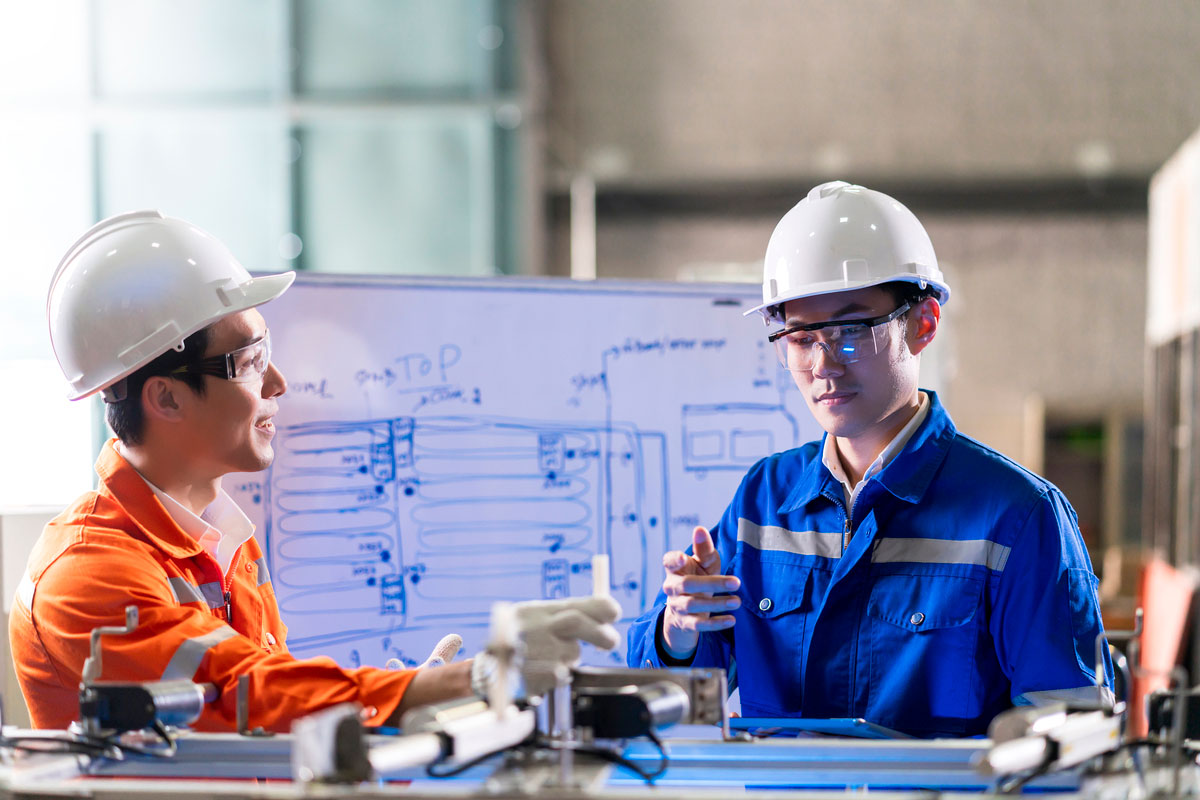
Interconnection
The insights derived from them can be interconnected to generate comprehensive overviews. For instance, the findings from equipment twins can be integrated into a production line twin, which, in turn, informs a factory-scale digital twin. Employing interconnected them in this manner facilitates intelligent industrial applications for real-world operational enhancements and advancements.
Illustrations
Illustrations of digital twin applications can be observed in various industries, spanning manufacturing, maintenance, and failure prevention, along with lifecycle monitoring.
Use cases encompass the automotive sector, where telemetry sensors transmit feedback from vehicles to their systems, factories employing digital twins to simulate processes for enhancements, and healthcare settings where sensors inform them of patient well-being monitoring and prediction.
Industry Impact
By integrating technologies such as artificial intelligence, machine learning, and software analytics with data, digital twins establish simulation models capable of updating alongside or in lieu of their physical counterparts. This empowers companies to evaluate a fully computerized development cycle from design to deployment and even decommissioning.
Through the emulation of physical assets, frameworks, and operations to generate continuous data, they enable industries to anticipate downtime, adapt to changing circumstances, test design refinements, and more.
Its technology plays a pivotal role in the development of Industry 4.0 by offering automation, data exchange, and integrated manufacturing processes, as well as reducing the risks associated with product rollout. Industry personnel can monitor operations in real-time, providing early alerts for potential failures and enabling real-time performance optimization and evaluation with minimal productivity loss.
Applications
Digital twins find applications across a wide spectrum of industries, serving diverse purposes. Noteworthy examples include:
Manufacturing: It enhances manufacturing productivity, streamlining processes, and reducing throughput times.
Automotive: In the automotive industry, digital twins are used to gather and analyze real-time operational data from vehicles to inform product improvements.
Retail: Beyond manufacturing, the retail sector leverages digital twins to model and enhance the customer experience, whether at the level of shopping centers or individual stores.
Healthcare: Its technology benefits the medical sector in areas such as organ donation, surgical training, and risk mitigation for procedures. Systems also model hospital visitor flows, identify infection risks, and assess potential danger through contact.
Disaster: Management contributes to the informed creation of smarter infrastructures, emergency response plans, and climate change monitoring in response to global climate change challenges.
Smart Cities: It aids cities in becoming more economically, environmentally, and socially sustainable. Virtual models inform planning decisions and offer solutions to complex urban challenges. Real-time responses to issues are guided by information from digital twins, enabling assets like hospitals to respond swiftly to crises.
Digital Twins in 2024 and the Future of It
A fundamental shift in existing operating models is clearly underway. Asset-intensive industries are undergoing a digital transformation that is disrupting operating models, necessitating a holistic view of assets, equipment, facilities, and processes that encompass both physical and digital components. They play a crucial role in this realignment.
The potential of digital twins is nearly boundless, as increasing cognitive capabilities are continually harnessed for their advancement. They are continuously acquiring new skills and capabilities, allowing them to consistently generate the insights required to enhance products and streamline processes.
- Wider Adoption: Digital twin use is probably on the rise in a variety of industries. Digital twins may have been more widely incorporated into operations in sectors such as manufacturing, construction, and healthcare in order to improve monitoring, analysis, and optimization.
- Advanced IoT Integration: Digital twins may have advanced further with the widespread use of Internet of Things (IoT) sensors and devices, enabling real-time data collecting, analysis, and control. Digital representations that are more responsive and accurate may result from this.
- AI and Machine Learning: It may have benefited more from AI and machine learning technologies. Through data analysis of the digital twin, these technologies can aid in anomaly identification, predictive maintenance, and operational optimization.
- Healthcare: Digital twins may have been employed in healthcare to provide individualized patient care. Virtual patient models could aid medical professionals in tracking chronic illnesses, simulating treatments, and more precisely forecasting patient outcomes.
- Smart Cities: It’s possible that the idea of digital twins has grown to encompass entire cities. Urban areas could be made more sustainable and efficient by using them to monitor traffic, infrastructure, and public services by municipalities.
- Energy and Environment: Digital twins may have been used by the energy industry to maximize energy production, delivery, and consumption. Simulators and environmental monitoring could support sustainable resource management.
- Security and Privacy: As digital twins are used more frequently, privacy and data security issues may arise. It’s probable that guidelines and recommended procedures have changed to address these problems.
- Interoperability: More work to standardize digital twin technologies and make sure that various platforms and systems can work together to facilitate the seamless exchange of data and insights may be undertaken in 2024.
- Education and Training: Since they provide lifelike simulations for practical learning across a range of subjects, they may have found use in training and education.
- Entertainment and Gaming: In the gaming and entertainment sectors, digital twins could be employed to create incredibly lifelike and engaging virtual landscapes.
It’s crucial to remember that these are only theoretical trends, and actual breakthroughs in digital twin technology in 2024 may differ based on a number of variables, such as market demands, legislative changes, and technological advancements. It would be wise to refer to recent publications or industry reports for the most recent information.
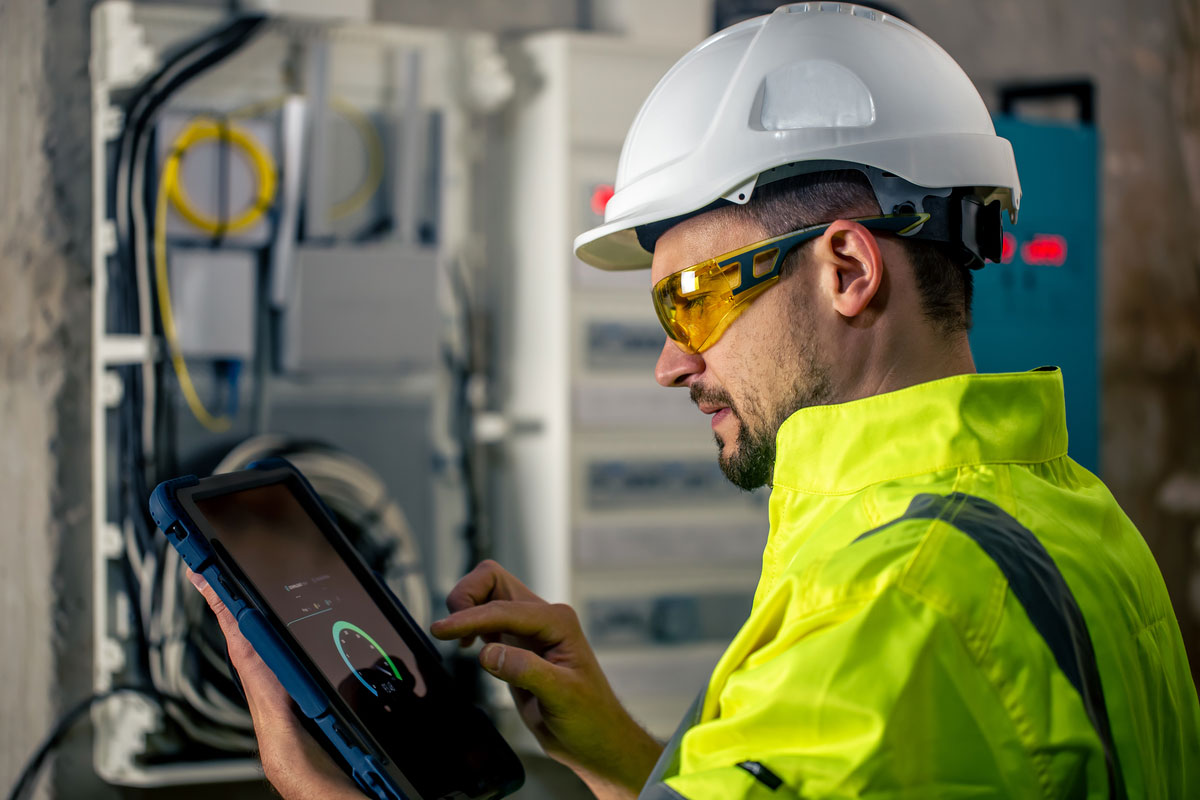
Conclusion
The concept of digital twin technology has evolved significantly since its introduction in the early 1990s, and it continues to revolutionize various industries. Digital twins, which are virtual replicas of physical entities, have become powerful tools for simulating, analyzing, and improving real-world systems. In 2024, we can see a continued trend of wider adoption across industries, driven by advanced IoT integration and the utilization of AI and machine learning. Healthcare and smart cities are increasingly benefiting from digital twins, enabling personalized patient care and more sustainable urban planning.
The technology underpinning digital twins, including IoT sensors, data connectivity, cloud computing, big data analytics, 3D modeling, and more, continues to advance, providing dynamic and sensitive digital replicas. These replicas offer valuable insights that drive informed decision-making, enhance product design, reduce time to market, and improve environmental sustainability.
Furthermore, the concept has expanded beyond single entities, with interconnected digital twins creating enterprise metaverses, allowing for holistic simulations, scenario planning, and improved decision-making.
As digital twin technology progresses, it holds the promise of transforming industries and providing a more comprehensive understanding of real-world systems. The future of it is marked by its adaptability, interoperability, and a broad spectrum of applications across manufacturing, automotive, retail, healthcare, disaster management, and smart cities.
Resources:
McKinsey & Company | IBM | TWI Global | Living-In | Challenge Advisory | GIM International | Orange Business | Forbes | SAP | PropTechOS | Time Magazine | Accenture | BrainCube
For all the pictures: Freepik

